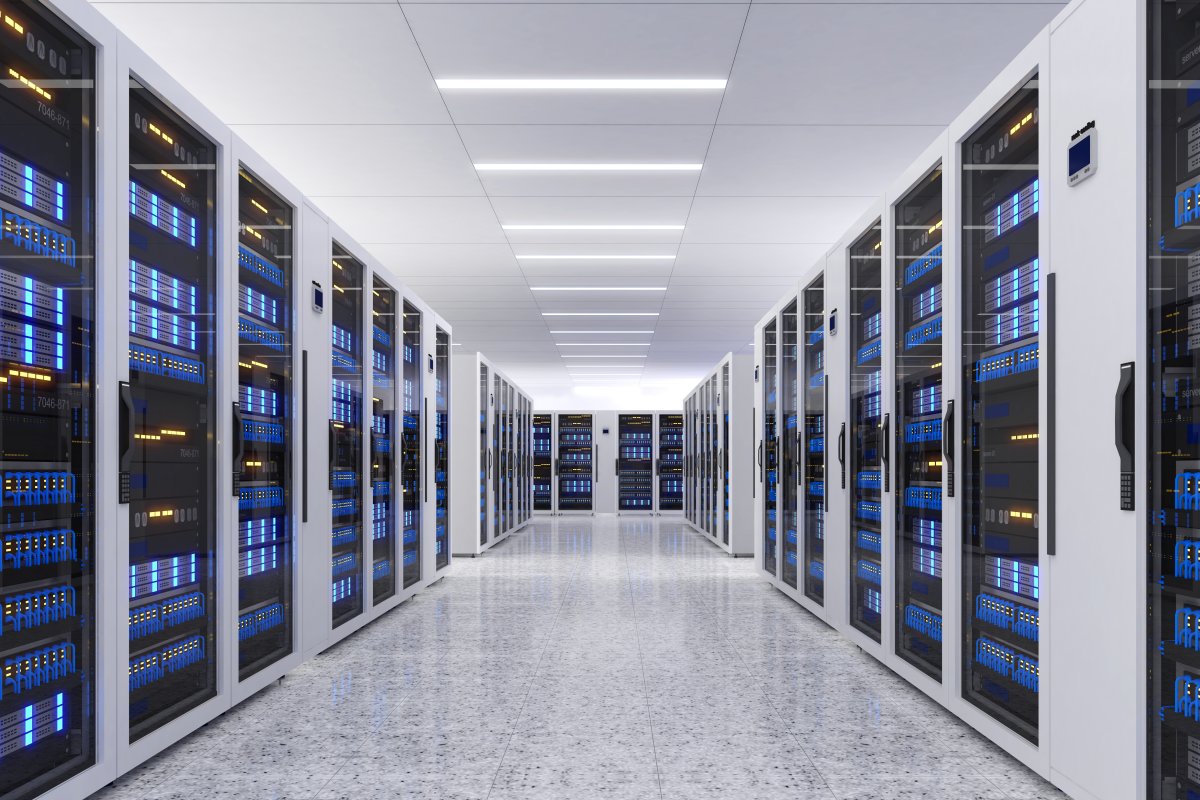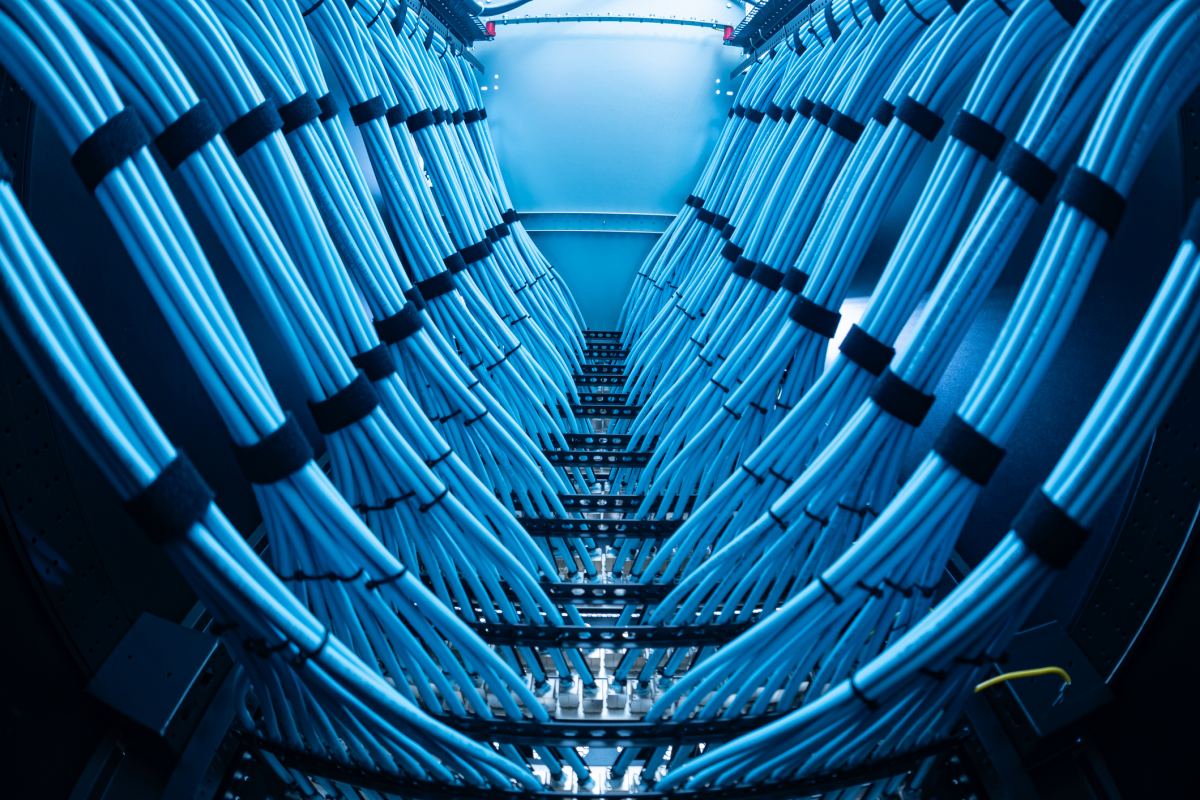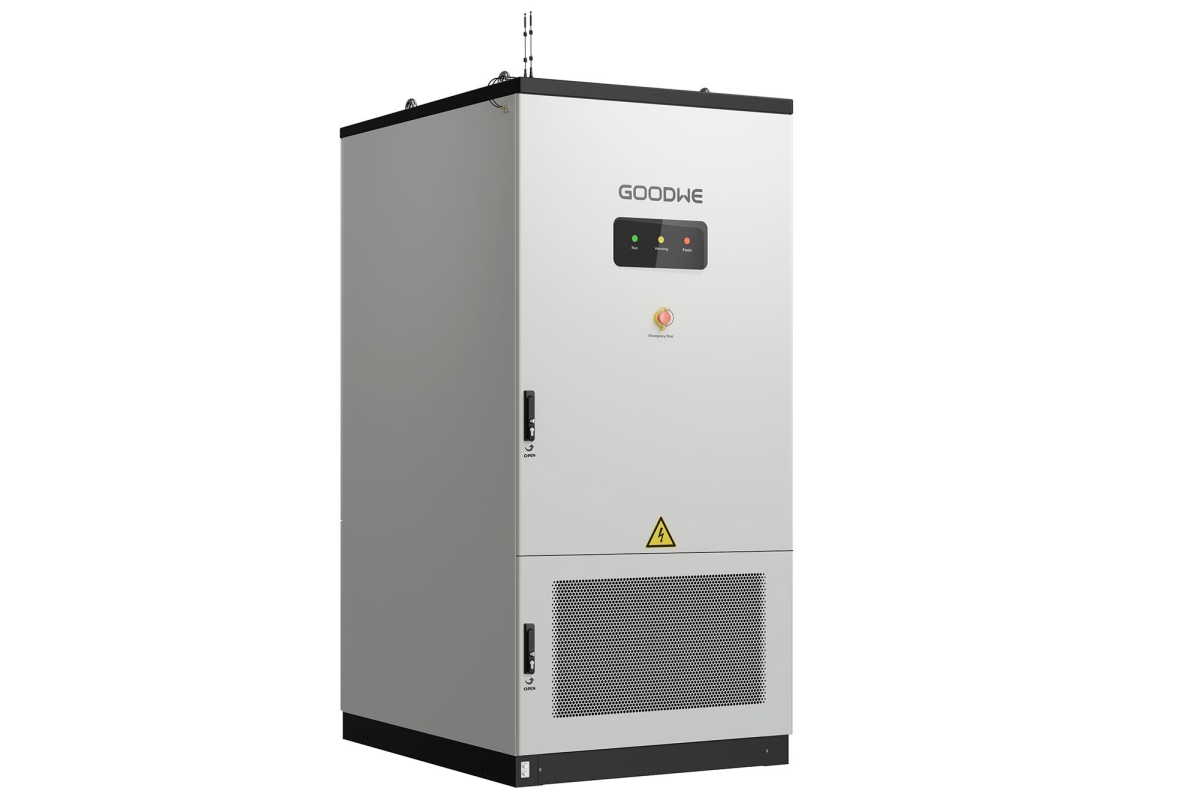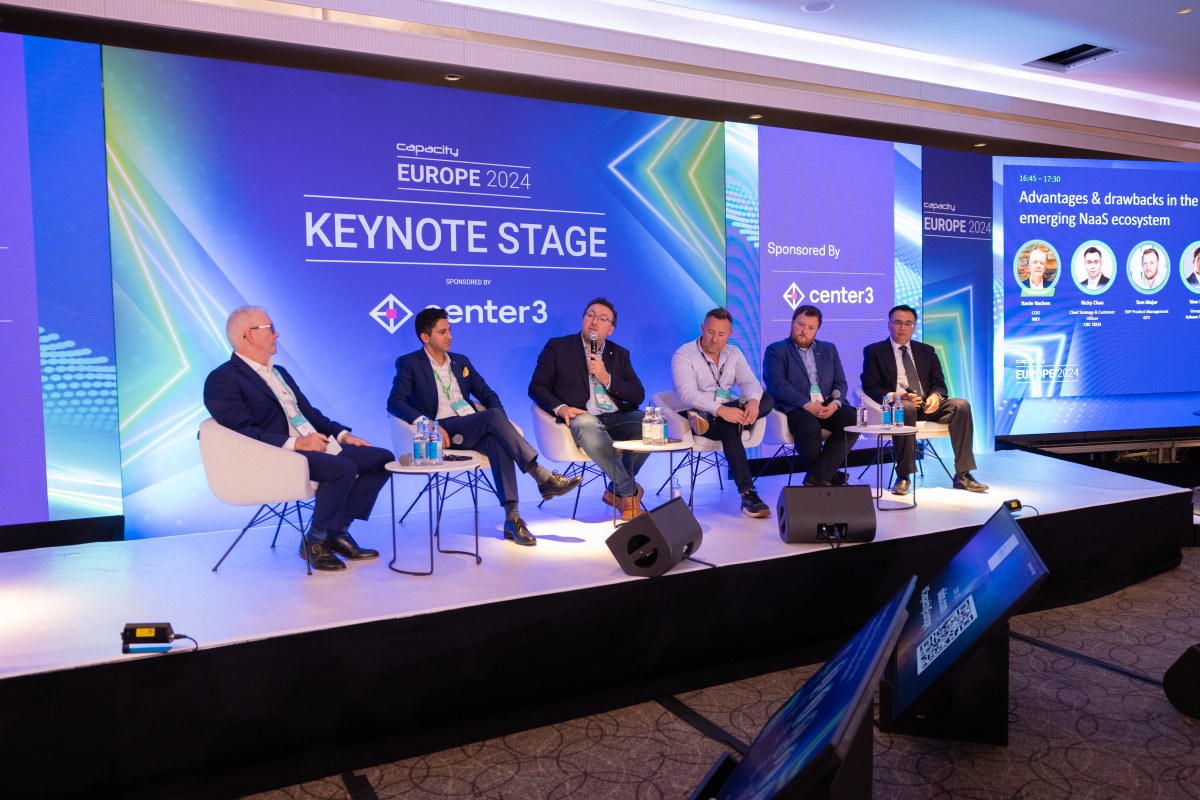Data Centre Infrastructure News & Trends
Data Centre Infrastructure News & Trends
Innovations in Data Center Power and Cooling Solutions
Sponsored
AI is reshaping the grid — is your data centre ready?
As Hitachi Energy explains, AI is driving explosive demand—and volatility—in data centre power needs. Today’s 'AI factories' require flexibility, speed, and sustainability. Traditional baseload planning won’t cut it.
Digitalisation enables real-time load shifting, renewable alignment, and grid responsiveness. Energy availability is now the top constraint, making early collaboration with utilities and infrastructure partners essential.
Capabilities like storage, on-site generation, and load shaping—once optional—are now critical. And no single player can solve this alone. Deep cross-sector collaboration is the key to building resilient, scalable systems.
We’ve seen it work: when energy and IT teams align early, results are faster, cleaner, and more adaptable.
AI is changing the grid and data centres must evolve. Flexibility isn’t an option for data centres: it’s the foundation.
Read the full article to discover how to power data centres smarter, faster, and more sustainably.
For more from Hitachi, click here.
Joe Peck - 26 August 2025
Data Centre Infrastructure News & Trends
Data Centres
Innovations in Data Center Power and Cooling Solutions
'Decentralised energy key against DC construction bottlenecks'
Following warnings the UK risks missing out on significant investment in artificial intelligence (AI) facilities due to grid connection concerns, British temporary power and temperature control company Aggreko is encouraging operators to explore other options to best address ongoing bottlenecks.
Digital Realty, a data centre developer, has called for overhauls of Britain’s energy grid and planning system to ensure reliable power supplies for new facilities. With AI-related tasks requiring higher workloads from data centres, owners and operators are under increasing pressure to maintain site efficiency, resilience, and uptime.
With the number of data centres in the UK set to increase by almost a fifth, grid connection delays continuing as a concern, and the National Grid under increasing strain to facilitate ever-growing power demand, Aggreko is highlighting how decentralised energy provision could help project managers navigate these pressures.
The company’s recent whitepaper, Bridging the Energy Gap for European Data Centres, explores how on-site power generation can play a key role in ensuring data centre construction and commissioning remains on track.
“Our conversations with data centre owners and operators show Digital Realty’s concerns are echoed throughout the sector,” says Billy Durie, Global Sector Head for Data Centres at Aggreko.
“As with a great many other places, AI is set to have a transformative impact on the data centre industry. But if it is to do so, reliable power sources are key. The lengthening queues for grid connections provide proof that these sources cannot be guaranteed via the grid.
"While in the long run planning reforms will make it easier to deliver the necessary infrastructure needed to power facilities handling AI-heavy workloads, bridging power is required in the short- to medium-term. It is essential to ensuring UK data centre construction can continue to meet skyrocketing demand and not miss out on the huge levels of investment that come with AI technologies.”
The challenge of procuring suitable equipment in tier one and tier two markets has proved a historical impediment for data centre owners and operators looking to invest in permanent decentralised energy solutions. But with projects running the risk of stalling amid the AI boom, Billy is encouraging relevant stakeholders to consult the supply chain and explore procurement strategies based around temporary equipment hire in the short-, medium-, and long-term.
Aggreko, for example, has recently integrated Stage V HVO-fuelled generators and customisable SCADA controls at a critical UK facility, aiming to provide a robust standby power solution to ensure site resilience and reduce emissions, independent of grid connection status.
“Data centre construction and commissioning must continue as unhindered as possible if facilities are to be brought online within strict project timescales,” Billy continues. “However, grid connection delays and a scarcity of decentralised energy solutions available for outright purchase means deadlines may be missed.
“Yet power is power, whether it comes from the grid or a hired generator. It is therefore vital project stakeholders and facility operators investigate different strategies for procuring necessary energy supplies.
"Leveraging third-party expertise within the supply chains can help these organisations access the expertise and capacity to swiftly deploy energy-efficient and scalable technologies on a hire basis so they can meet specific site needs.”
For more from Aggreko, click here.
Joe Peck - 21 August 2025
Data Centre Infrastructure News & Trends
Innovations in Data Center Power and Cooling Solutions
News
Products
GoodWe introduces liquid-cooled energy storage system
GoodWe, an inverter manufacturer and smart energy system provider, has launched the ESA Series, an all-in-one, liquid-cooled energy storage system designed for commercial and industrial (C&I) applications.
The unit provides 125kW nominal output power and 261kWh storage capacity, as well as integrating the power conversion system, battery cells, energy management system, and battery management system into a single cabinet.
The system can be scaled by connecting up to 15 units in parallel, supporting a maximum total capacity of 3.91MWh in grid-connected scenarios. GoodWe says the design allows for simplified installation, operation, and maintenance whilst offering flexible expansion.
Performance and safety features
The ESA cabinet has a footprint of 1.47m² and an energy density of 177.6kWh per square metre, aimed at sites with limited space. It incorporates 314Ah lithium iron phosphate (LFP) cells and liquid cooling technology to regulate temperatures across the system. The storage supports 6,000 cycles and operates in temperatures from -25°C to 55°C.
The ESA 125kW/261kWh was tested under UL 9540A methodology and includes multiple safety measures, such as smoke detection, thermal sensors, combustible gas monitoring, and humidity control with automatic dehumidification.
Fire protection uses both active and passive approaches, including integrated aerosol suppression modules. TÜV Rheinland has certified the system for environmental adaptability across climatic, mechanical, chemical, electromagnetic, and specialised scenarios.
Deployment examples
GoodWe reports that early projects in China have demonstrated reductions in energy costs and improved operational efficiency. At its Guangde manufacturing site, nine ESA cabinets were installed in parallel to provide large-scale storage. Another installation in De’an combined seven cabinets with wind and solar power to support an energy storage project for heavy-duty truck charging.
The system supports operating modes including peak shaving, demand management, energy trading participation, and off-grid backup power. In on-grid deployments, ESA units can be combined with GoodWe GT Series inverters and managed by the SEC3000C Smart Energy Controller to support up to 40 string inverters.
Joe Peck - 21 August 2025
Data Centre Infrastructure News & Trends
Enterprise Network Infrastructure: Design, Performance & Security
News
Ocean Networks selects Prysmian and IT for Hawaiian fibre link
Ocean Networks, a telecom development and service company, has today announced cable manufacturer Prysmian and submarine cable engineering and installation specialist International Telecom (IT) as partners for the Hawaiian Islands Fiber Link (HIFL) submarine cable system.
The agreement represents a key step in the development of Hawaii’s open-access, carrier-neutral inter-island fibre infrastructure, which is intended to improve high-speed broadband connectivity across the state.
The HIFL project forms part of the US State of Hawaii’s 'Connect Kākou' broadband initiative. Prysmian will supply around 740km of submarine cable, while IT will provide engineering and installation services.
Progress on Hawaii’s broadband initiative
David Blau, Chief Operating Officer of Ocean Networks, says, “We are thrilled to be working with industry leaders like Prysmian and International Telecom, whose expertise is crucial to achieving our goal of enhancing high-speed broadband access across Hawaii.
"Securing these contracts represents a major step forward in the construction timeline for the HIFL project, bringing us closer to fulfilling the promise of improved connectivity for all of Hawaii’s residents, businesses, education, and government entities.”
Davide Taddei, Submarine Telecom Business Director at Prysmian, adds, “Prysmian is proud to have been selected by Ocean Networks and [to] contribute to such a vital infrastructure project that will bring affordable, high-speed internet and connectivity to all residents.
"In today’s interconnected world, ensuring secure and resilient digital infrastructure is critical. Our systems are designed not only for performance and durability but also to support enhanced digital security and data integrity for the communities they serve.
"The HIFL project is a key step in delivering robust infrastructure in the Pacific and builds on Prysmian’s strong track record in challenging submarine environments worldwide.”
Steve Arsenault, Vice President of Sales and Marketing at IT, comments, “IT takes great pride in our long history of successful project delivery within the Hawaiian Islands.
"Bringing this experience to bear on behalf of Ocean Networks for the HIFL project is an honour. We are pleased to contribute once again to the important work of strengthening Hawaii’s inter-island telecommunications infrastructure.”
Ocean Networks is overseeing the supply, construction, operations, and maintenance of the HIFL system, with the aim of supporting a more advanced and equitable digital landscape for Hawaii.
For more from Prysmian, click here.
Joe Peck - 20 August 2025
Data Centre Infrastructure News & Trends
Enterprise Network Infrastructure: Design, Performance & Security
Events
News
Capacity Europe 2025 returns to London
Capacity Europe, an event for global digital infrastructure and connectivity, returns to the InterContinental London – The O2 from 21–23 October 2025, bringing together more than 3,500 decision-makers from across the global connectivity and digital infrastructure sectors.
Now in its 24th year, the event has grown from a telecoms conference into a major platform for deal-making, partnerships, and thought leadership in data infrastructure, cloud, and AI.
Across three days and four stages, 200+ speakers will discuss topics ranging from preparing networks for AI to improving interoperability, security, and resilience in an era of growing data demand and geopolitical uncertainty.
Industry leaders on stage
Confirmed speakers include Annette Murphy, Chief Commercial Officer at Colt Technology Services; Enrico Bagnasco, CEO at Sparkle; Petrina Steele, Global Lead – Emerging Technologies at Equinix; and Rebecca Stanic, Principal – Infrastructure Planning & Network Acquisition at Microsoft.
Executives from Goldman Sachs, EdgeConneX, Deutsche Telekom, and Openmind Networks will also take part.
Attendees at previous editions have praised the event for its networking and deal-making opportunities. Prabhu Abimannan, Manager International Data Business at e& Europe, comments, “Capacity Europe offers invaluable networking opportunities and brings together industry leaders to discuss the latest trends in international telecom. Each year, the event raises the bar.”
Linda Shannon, Director at Hilco Streambank, adds, “Capacity Europe is a not-to-be-missed event. Fantastic networking opportunities, both formal and informal, alongside useful content. An invaluable opportunity to catch up with existing clients and make new connections in one location.”
Building the future of connectivity
Capacity Europe 2025 will gather leaders from connectivity, cloud, edge, investment, and software to exchange ideas, form partnerships, and define strategies for the next decade of digital infrastructure.
“Celebrating the 24th year of Capacity Europe is a proud moment for us,” says Gabriela Cogorno, Head of Marketing-Events and Membership, Telecoms & Tech at techoraco. “This year’s event will be bigger and more impactful than ever, highlighting key themes and laying the foundation for innovation and transformation in the digital sector.”
The event is once again supported by Spa Communications, which will lead global media engagement following a successful 2024 campaign.
Why attend?
• Connect with 3,500+ decision-makers from 100+ countries
• Hear insights from 200+ speakers shaping the digital future
• Forge deals across connectivity, cloud, edge, investment, and software
• Be part of the conversations driving the future of networks and services
Capacity Europe 2025 will take place at the InterContinental London – The O2, 21–23 October. Visit the event's website to find out more.
For more on Capacity Europe, click here.
Joe Peck - 19 August 2025
Data Centre Infrastructure News & Trends
Liquid Cooling Technologies Driving Data Centre Efficiency
News
Products
Danfoss expands UQDB coupling range
Danfoss Power Solutions, a Danish manufacturer of mobile hydraulic systems and components, has completed its Universal Quick Disconnect Blind-Mate (UQDB) coupling portfolio with the launch of the -08 size Hansen connector.
The couplings are designed for direct connection between servers and manifolds in data centre liquid cooling systems and are fully compliant with Open Compute Project (OCP) standards.
Higher flow capacity
The new -08 size joins the existing -02, -04, and -06 sizes, covering body sizes from 1/8-inch to 1/2-inch. The company says it delivers a 29% higher flow rate than OCP requirements, supporting greater cooling efficiency for high-density racks.
Danfoss UQDB couplings feature a flat-face dry break design to prevent spillage and a push-to-connect system with self-alignment to simplify installation in tight spaces. The plug half can move radially to align with the socket half, allowing compensation of up to +/-1 millimetre for easier in-rack connections.
Developed in collaboration with the OCP community, the couplings meet existing standards and are designed to comply with the forthcoming OCP V2 specification for liquid cooling, expected in October.
All UQDB units undergo helium-leak testing for reliability and include QR codes on both plug and socket halves for easier identification and tracking.
https://www.youtube.com/watch?v=yjt9_O0Wb1o
Chinmay Kulkarni, Data Centre Product Manager at Danfoss Power Solutions, says, “Our now-complete UQDB range expands our robust portfolio of thermal management products for data centres, enabling us to provide comprehensive systems and delivering on our 'one partner, every solution' promise.
"When paired with our flexible, kink-free hoses, we deliver a complete direct-to-chip cooling solution that sets the standard for efficiency and reliability.”
The couplings are manufactured from 303 stainless steel for corrosion resistance, with EPDM seals for fluid compatibility. They feature ORB terminal ends for secure, leak-free connections, an operating temperature range of 10°C to 65°C, and a minimum working pressure of 10 bar.
For more from Danfoss, click here.
Joe Peck - 19 August 2025
Data Centre Infrastructure News & Trends
Enterprise Network Infrastructure: Design, Performance & Security
News
LINX announces major upgrades at IXP in Riyadh
The London Internet Exchange (LINX), an internet exchange point (IXP) operator of digital infrastructure, has upgraded its network at the interconnection hub it powers in Saudi Arabia for data centre and digital enabler center3, a subsidiary of the STC Group.
Essential upgrades were carried out to increase the availability of 100GE ports following customer demand as well as to enable the interconnection point with 400GE connectivity services.
These upgrades mark a milestone in the evolution of the IXP in Riyadh, which has reportedly become a cornerstone of Saudi Arabia’s digital infrastructure since its launch in 2024.
Located at the Remal facility (RDC102), the exchange is now poised to meet the growing demand for high-capacity, low-latency interconnection services from global networks, content providers, and enterprises.
“Demand for high-speed, resilient connectivity in the Kingdom continues to grow, and these upgrades ensure that the Riyadh IXP remains at the forefront of regional interconnection,” says Halil Kama, Director for the Middle East at LINX.
“By enabling 400GE capabilities and expanding 100GE availability, we’re empowering networks to scale efficiently and deliver superior performance to end users."
The enhancements align with the broader vision to support Saudi Arabia’s Vision 2030 agenda, which places digital transformation at the heart of national development.
center3 also recently announced that they are accelerating their data centre expansion, targeting 1 GW of total capacity by 2030 to support the growth in the region’s broader digital transformation.
With over $3 billion (£2.2 billion) already invested and an additional $10 billion (£7.38 billion) planned, the company says it is building a "next-generation, carrier-neutral data centre ecosystem."
Since the inception of the LINX-powered IXP in Jeddah, which launched in 2019, the partnership between LINX and center3 has been playing a role in shaping the Kingdom’s interconnection landscape.
For more from LINX, click here.
Joe Peck - 18 August 2025
Data Centre Infrastructure News & Trends
Enterprise Network Infrastructure: Design, Performance & Security
News
Gateway Fiber deploys Perle IOLAN Console Servers
Gateway Fiber, an internet service provider (ISP) serving communities in Missouri, Minnesota, Massachusetts, and North Dakota, USA, has strengthened its remote management capabilities by deploying Perle IOLAN Console Servers across its network.
The company operates micro data centres, also known as points of presence (PoP) sites, which are essential for delivering high-speed internet.
The IOLAN Console Servers provide out-of-band access, enabling administrators to remotely manage and troubleshoot equipment. This aims to reduce downtime and allow rapid response to service issues.
According to Jeff Shilt, Senior Network Engineer at Gateway Fiber, the team had considered Cisco terminal servers with LTE routers but found the approach too costly. The IOLAN units, with integrated cellular connectivity, reportedly offered a more affordable option.
“The IOLAN Console Server gives the ultimate back door connectivity,” says Jeff. “When we’ve had a fibre cut or we lose access, we come in via the LTE and use the serial console ports to get into our equipment.”
The devices also support maintenance and upgrades. “When we must do firmware updates, we can access the equipment via an LTE interface, as if we were physically there. This makes the process easier and safer,” Jeff explains.
They also allow engineers to guide field technicians remotely during hardware changes, intending to reduce travel requirements and associated costs.
Gateway Fiber continues to expand its fibre-to-the-home network to meet growing data demands. “Any new cabinet we build is going to have an IOLAN in it for out-of-band access, and they’re awesome for that. I mean, they’re just perfect,” continues Jeff.
John Feeney, Chief Operating Officer at Perle Systems, comments, “We are thrilled to support Gateway Fiber in [its] mission to provide reliable, high-speed internet to underserved communities.
"Our IOLAN Console Servers are designed to offer robust and secure remote access, ensuring that Gateway Fiber can maintain their high standards of service and quickly address any network issues.”
Joe Peck - 14 August 2025
Data Centre Infrastructure News & Trends
Enterprise Network Infrastructure: Design, Performance & Security
News
New internet exchange in São Paulo
DE-CIX, an operator of internet exchanges (IXs), has started to operate its peering and interconnection services in São Paulo, Brazil.
The new internet exchange, DE-CIX Sao Paulo, is distributed across three data centres: Equinix SP4, Elea SPO1, and Ascenty SP4. The company is already onboarding the first 20 customers in the region, including TBC Azion Technologies.
With the start of operations, companies now have access to local peering, network interconnection, and remote peering, as well as cloud exchange and multi-cloud routing functionalities.
Customers can gain direct and private access to cloud providers both locally and remotely, allowing cloud-to-cloud communication and facilitating their digital business with, what DE-CIX claims to be, "low-latency and high-performance connectivity."
By joining the exchange, companies can connect directly to thousands of network operators (carriers), internet service providers (ISPs), cloud and content providers, and corporate networks from more than 100 countries worldwide.
"With our high-performance, secure, and scalable interconnection services, we enhance local interconnection, creating a more resilient and globally integrated interconnection ecosystem in São Paulo," claims Ivo Ivanov, CEO of DE-CIX. "Being a part of the global DE-CIX ecosystem offers the potential of an enormous diversity of networks now accessible in the city.
"The growing digital economy in Brazil requires state-of-the-art connectivity, ensuring that data exchange takes place fast, efficiently, and securely, as local as possible and as global as necessary. The new IX opens up a complementary offering that further enriches the country as the second largest market in the world in terms of number of networks."
The new internet exchange is integrated into DE-CIX’s global ecosystem through connections to IXs in New York, Lisbon, Madrid, and Frankfurt (the largest IX in Europe).
The connectivity takes advantage of several transatlantic routes via the Atlantic South-North and South-South connectivity corridors. This will allow connected Brazilian networks to reach thousands of local, regional, and international networks that together form the largest interconnection ecosystem in the world.
Rafael Umann, CEO of Azion, comments, "Azion operates one of the most distributed and advanced infrastructures in the world, with a presence in over 100 data centres. Our platform ensures resilience, security, and performance for critical and AI workloads.
"Through interconnection with DE-CIX, we guarantee our customers access to the best infrastructure on the market and further expand our global network to deliver low latency and high availability to our clients, regardless of user location."
For more from DE-CIX, click here.
Joe Peck - 14 August 2025
Data Centre Infrastructure News & Trends
Enterprise Network Infrastructure: Design, Performance & Security
News
Globalgig ranks on Inc. 5000 for sixth year running
Globalgig, a provider of globally managed communication and connectivity systems, has been named on the Inc. 5000 list of America’s fastest-growing private companies for the sixth year in succession.
The company, which manages communication and connectivity services worldwide, was ranked 3,808, with revenue growth of 99%. It joins a small group of US businesses noted for sustained expansion.
Over the past year, Globalgig has expanded its AI-based network management and security services, aimed at supporting distributed workforces and addressing cyber threats. Its updated managed security offering provides organisations with adaptive, data-led networks.
The past three years have seen the company widen its service portfolio, improve operational efficiency, and recruit additional staff. A key development has been the launch of Orchestra, an AI platform designed for inventory management and reporting across all services.
Orchestra Insight, the analytics engine within the platform, delivers real-time network intelligence across IT systems. Features include contextual monitoring, automation tools, and configurable dashboards, giving a single view of network performance, security status, and risk across legacy and newer devices, cloud services, and security tools.
“This recognition reflects our team’s strong commitment to solving today’s challenges while helping enterprises prepare for the future,” says Ernest Cunningham, CEO of Globalgig.
“At Globalgig, we focus on delivering outcomes that empower organisations to grow, adapt, and succeed. As technologies like agentic AI continue to reshape the business landscape, we are helping our clients build the capabilities they need to stay ahead.
"This includes unifying legacy and modern networks, and providing real-time visibility across devices, clouds, and applications.”
Joe Peck - 13 August 2025

Head office & Accounts:
Suite 14, 6-8 Revenge Road, Lordswood
Kent ME5 8UD
T: +44 (0)1634 673163
F: +44 (0)1634 673173









